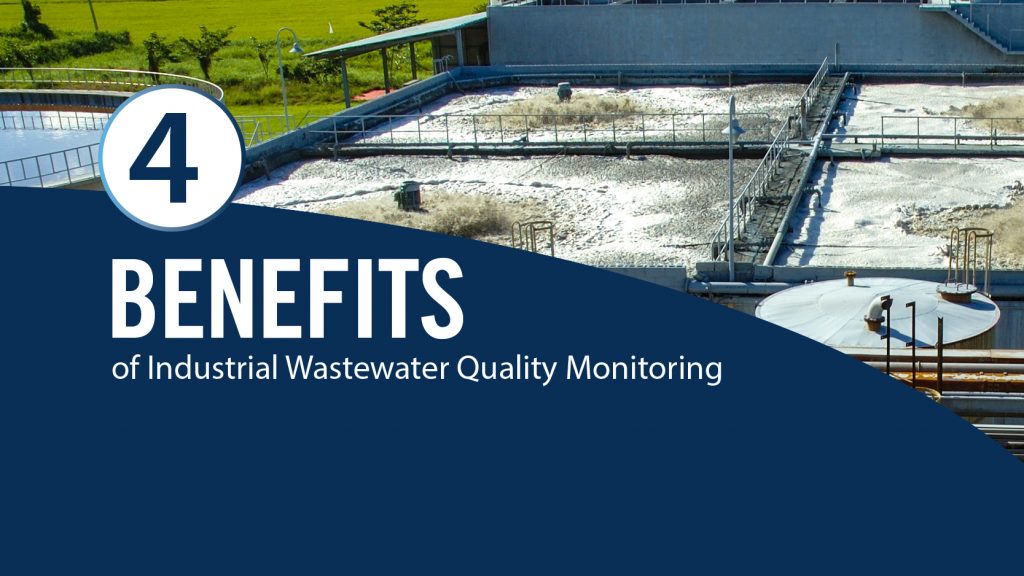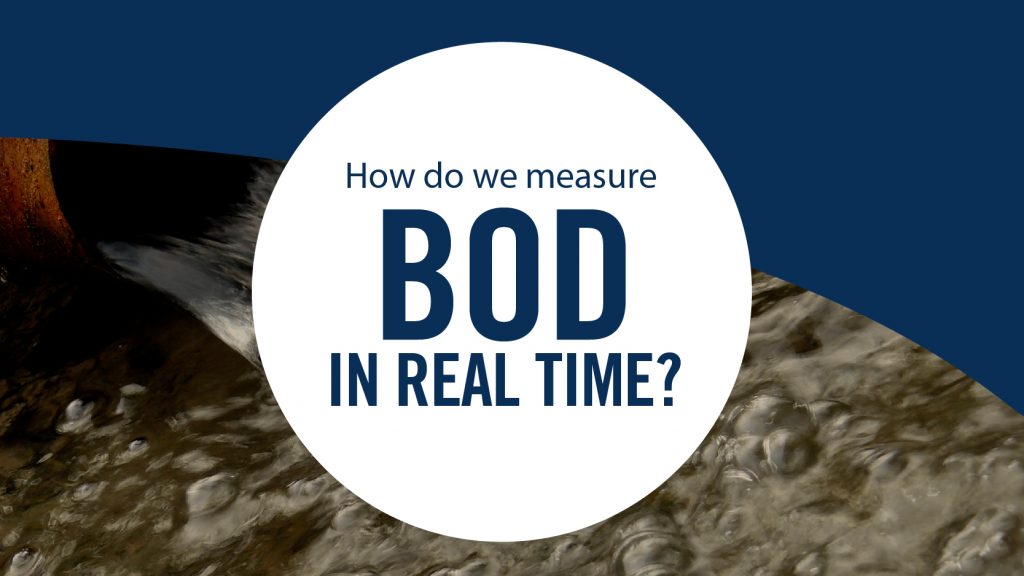Wastewater treatment professionals in the Pulp and Paper industry face difficult challenges. Many of the manufacturing processes are heavily reliant on water, resulting in large volumes of wastewater that can contain complex mixtures of organic pollutants, solids, and other chemicals.
Wastewater treatment is often necessary to meet environmental effluent discharge permit limits or comply with municipal sewer regulations to avoid surcharge payments. In some cases, treatment is also carried out for on-site reuse purposes. With limited insights into the manufacturing process, it can be difficult for wastewater treatment operators to detect process upsets or spills in a timely manner and efficiently treat wastewater to the level required for discharge.
Information that can be useful for controlling and optimizing wastewater treatment processes, such as biochemical oxygen demand (BOD) and chemical oxygen demand (COD), are laboratory tests that take hours to days to generate results. This delay presents a missed opportunity for operators to detect events when they occur and adjust or optimize their treatment system accordingly.
RAPID OR REAL-TIME ACTIONABLE INFORMATION
Practical, rapid and real-time BOD/COD/Organics water quality monitoring instruments are advancing how wastewater is managed in the Pulp and Paper industry. These innovative solutions utilize ultraviolet (UV) and visible (VIS) light to detect organic matter as well as other parameters and industry specific compounds. The UV-VIS absorbance method has many advantages over the conventional lab methods for BOD and COD including:
- Results generated in seconds
- No reagents
- No sample preparation
- No storing, conditioning or shipping samples to lab
Availability of much needed rapid or real-time information can have a significant impact on a plant’s performance by providing insights about events or spills that would otherwise go unnoticed with lab testing methods, enabling greater process control abilities.
BENEFICIAL APPLICATIONS FOR MONITORING
Rapid or real-time monitoring provides a simple and cost-effective way for operators to gain a more complete understanding of their wastewater and processes. This results in a variety of beneficial outcomes including informed decision making, optimization of system performance, greater process control, optimization of chemical and nutrient dosing, reduction in effluent surcharges or fines and protection of advanced treatment systems from overloading and early exhaustion.
Organic Loading and Event Monitoring
Real-time organics monitoring, as BOD, COD or TOC, post primary clarification can provide an early warning of shock loading from the manufacturing process going into biological treatment. Operators can use this information to make timely adjustments to the treatment processes to aid in organics removal, such as enhancing chemical dosage or aeration rate to achieve the desired effluent goal and avoid potential surcharges or permit violations.
Contaminant Detection
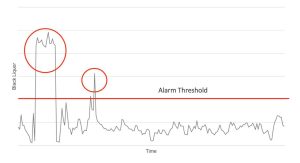 Problematic compounds that can be difficult to treat can be monitored post clarification in addition to the organic load. Early detection of spills allows for immediate corrective and preventative action by diverting waste streams with high chemical concentrations that could be toxic to downstream biological treatment units or difficult to treat. For facilities that hold discharge permits for colour (PCU), real-time black liquor and/ or dye monitoring is invaluable for compliance assurance. Figure 1 below displays real-time detection of a black liquor event from a Kraft Mill. An alarm threshold was established to trigger a real-time alarm that gives operators an early warning and time to react accordingly.
Problematic compounds that can be difficult to treat can be monitored post clarification in addition to the organic load. Early detection of spills allows for immediate corrective and preventative action by diverting waste streams with high chemical concentrations that could be toxic to downstream biological treatment units or difficult to treat. For facilities that hold discharge permits for colour (PCU), real-time black liquor and/ or dye monitoring is invaluable for compliance assurance. Figure 1 below displays real-time detection of a black liquor event from a Kraft Mill. An alarm threshold was established to trigger a real-time alarm that gives operators an early warning and time to react accordingly.
Chemical/Nutrient/Aeration Optimization
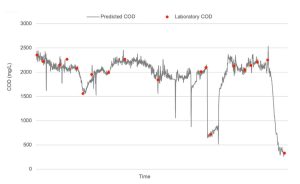 Continuous monitoring of the organic load also enables operators to improve their system’s performance over time by optimizing the dosage of chemicals and/or nutrients. Optimization is important because adding too little will decrease treatment efficiency, while adding too much will not only increase chemical costs but also introduce unwanted chemicals/nutrients into the effluent, which may require further treatment or cause compliance issues. Figure 2 below displays real-time COD data from a monitoring system installed in the primary settling basin for nutrient dose optimization. Laboratory COD samples are plotted in red displaying the reliability and accuracy of real-time monitoring over a wide range of concentrations. The same can be achieved in the aeration basins, decreasing the aeration rate for low organic load wastewaters to save energy and costs while maintaining the desired effluent quality.
Continuous monitoring of the organic load also enables operators to improve their system’s performance over time by optimizing the dosage of chemicals and/or nutrients. Optimization is important because adding too little will decrease treatment efficiency, while adding too much will not only increase chemical costs but also introduce unwanted chemicals/nutrients into the effluent, which may require further treatment or cause compliance issues. Figure 2 below displays real-time COD data from a monitoring system installed in the primary settling basin for nutrient dose optimization. Laboratory COD samples are plotted in red displaying the reliability and accuracy of real-time monitoring over a wide range of concentrations. The same can be achieved in the aeration basins, decreasing the aeration rate for low organic load wastewaters to save energy and costs while maintaining the desired effluent quality.
Advanced Treatment Protection
If advanced or tertiary treatment is present, monitoring prior to treatment ensures pre-treatment operations are running as designed and provides an early warning of failure upstream to protect advanced treatment processes from potential costly and damaging events such as membrane clogging.
Effluent Discharge / Compliance Assurance
In addition, real-time monitoring of BOD, COD, TSS and colour prior to discharge allows operators to gain assurance that quality meets expectations. If concentrations exceed desired levels, waste streams can be temporarily diverted or the recycle ratio can be increased for additional treatment helping to avoid expensive fines or surcharges that can cost a facility thousands to millions of dollars a year.
A DEEPER LOOK INTO THE TECHNOLOGY
These practical wastewater instruments utilize spectrophotometry, a well-established analytical method that has been used for decades in chemistry, physics, biochemistry, and chemical engineering for quantitative analyses. An ultraviolet and visible light source and sensor are used to measure the intensity of light passing through a water sample in a known path length cell. The measurement process does not require sample preparation, nor does it require reagents or changing the sample composition in any way. For this reason, operation is very straight forward and maintaining the instrument is both easy and low cost.
The principle is that substances in the water sample absorb light over a given wavelength range. According to Beer’s Law the measured absorbance of substances in the water sample is directly proportional to their concentration. Various types of natural and synthetic organic substances absorb light in the UV-VIS wavelength spectrum as well as nitrate (NO3) and nitrite (NO2). Additionally, suspended matter in water scatters, reflects and absorbs light which can be compensated for in measurement.
PRACTICAL AND AFFORDABLE BOD/COD MONITORING
Real Tech, a leading water quality monitoring solutions provider, has developed a new generation of UV-VIS absorbance instruments. Our innovative technologies have enabled us to take advantage of the benefits of utilizing multiple UV and visible LEDs in water quality sensors and meters to detect several important parameters and compounds. Each instrument is tailored with multiple UV/VIS LEDs that are specifically selected for the water quality parameter being measured providing superior measurement performance without the expense and complexity of alternative methods.
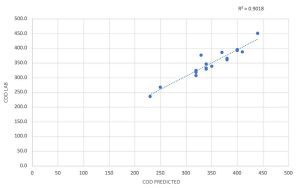 The instruments are factory calibrated for measuring right out of the box. For sites with more complex water matrices, Real Tech’s Liquid Ai Data Management PC Software can support with providing custom site-specific calibrations to always ensure our clients have confidence in their results. Figure 3 below displays a comparison of laboratory.
The instruments are factory calibrated for measuring right out of the box. For sites with more complex water matrices, Real Tech’s Liquid Ai Data Management PC Software can support with providing custom site-specific calibrations to always ensure our clients have confidence in their results. Figure 3 below displays a comparison of laboratory.
COD data and predicted COD data from a Real Tech system installed at a Pulp and Paper mill with an R2 value of 0.9018 suggesting high confidence and accuracy in the real-time predicted COD data. This new mid-tier product line bridges the gap between single wavelength photometric instruments and full spectrum scanning spectrophotometric instruments to offer measurement of many important water quality parameters in a simple, accurate and low-cost way.
Real Tech is advancing the management of water and wastewater empowering operators with rapid event detection and real process control opportunities
Download Improving Wastewater Treatment Process in Pulp and Paper Article


